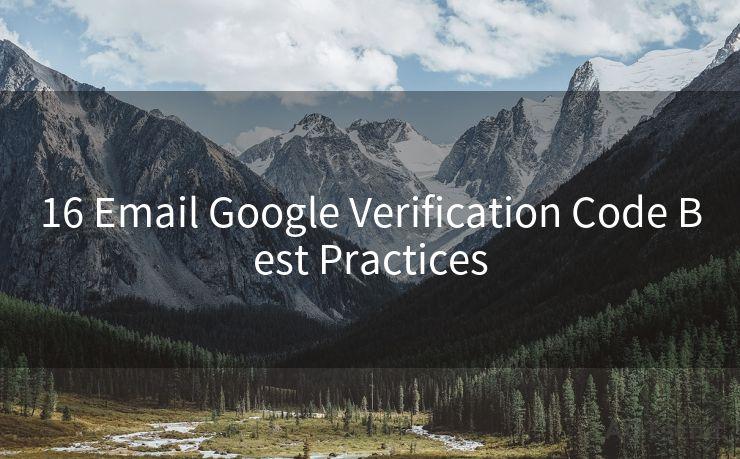16 Email Google Verification Code Best Practices




When it comes to online security, two-factor authentication (2FA) has become a standard practice, and Google is no exception. Among the various methods of 2FA, receiving verification codes via email is a common and convenient way to add an extra layer of security to your Google account. However, handling these codes properly is crucial to ensure your account's safety. Here are 16 best practices for managing Google verification codes sent to your email:
1. Use a Strong and Unique Password
Your email account is the gateway to your verification codes. Ensure it's protected with a strong, unique password that's difficult to guess.
2. Enable Two-Factor Authentication
Before relying on email verification codes, make sure you have enabled 2FA on your Google account. This adds another security layer, even if your email is compromised.
3. Keep Your Email Account Secure
Regularly check your email account's security settings and ensure no unauthorized devices or applications have access.
4. Monitor Your Email Regularly
Check your email frequently for any verification code requests. Prompt action can help prevent unauthorized access.
5. Verify the Sender
Always confirm that the verification code email is from a legitimate Google address. Be wary of phishing attempts.
6. Don't Share Verification Codes
Never share your verification codes with anyone, even if they claim to be from Google support. Google will never ask for these codes.
7. Use a Secure Connection
When accessing your email or Google account, ensure you're using a secure connection (HTTPS). This helps prevent data interception.

8. Avoid Public Computers or Networks
Accessing your email or entering verification codes on public computers or unsecured networks can expose your information.
9. Don't Store Codes
Don't save or store verification codes anywhere, especially in plain text. Use them immediately and then discard.
10. Be Cautious of Forwarding Rules
Check your email settings to ensure no unauthorized forwarding rules have been set up, which could expose your verification codes.
11. Update Your Contact Information
Keep your backup contact information (like a secondary email or phone number) up to date. This helps if you lose access to your primary email.
12. Use a Trusted Device
When possible, use a trusted device to access your email and enter verification codes.
13. Be Aware of Expiration Times
Verification codes typically expire after a short period. Be aware of this and don't use expired codes.
14. Report Suspicious Activity
🔔🔔🔔
【AOTsend Email API】:AOTsend is a Managed Email Service for sending transactional emails. Support Email Types: reminders, authentication, confirmations, notifications, verification codes, invoices, password resets, account activations, billing statements, two-factor authentication (2FA), and one-time passwords (OTP) emails, etc. $0.28 per 1000 Emails. 99% Delivery, 98% Inbox Rate.
You might be interested in:
Why did we start the AOTsend project, Brand Story?
What is a Managed Email API, How it Works?
Best 25+ Email Marketing Platforms (Authority,Keywords&Traffic Comparison)
Best 24+ Email Marketing Service (Price, Pros&Cons Comparison)
Email APIs vs SMTP: How they Works, Any Difference?
If you receive unexpected verification codes or notice suspicious activity on your account, report it to Google immediately.
15. Educate Yourself on Security
Stay informed about the latest security threats and best practices to protect your online accounts.
16. Consider Additional Security Measures
For extra security, consider using a password manager, VPN, or other security tools to protect your information.
By following these best practices, you can significantly reduce the risk of unauthorized access to your Google account, even when relying on email verification codes. Remember, security is an ongoing process, and staying vigilant is key.




Scan the QR code to access on your mobile device.
Copyright notice: This article is published by AotSend. Reproduction requires attribution.
Article Link:https://www.mailwot.com/p3160.html



